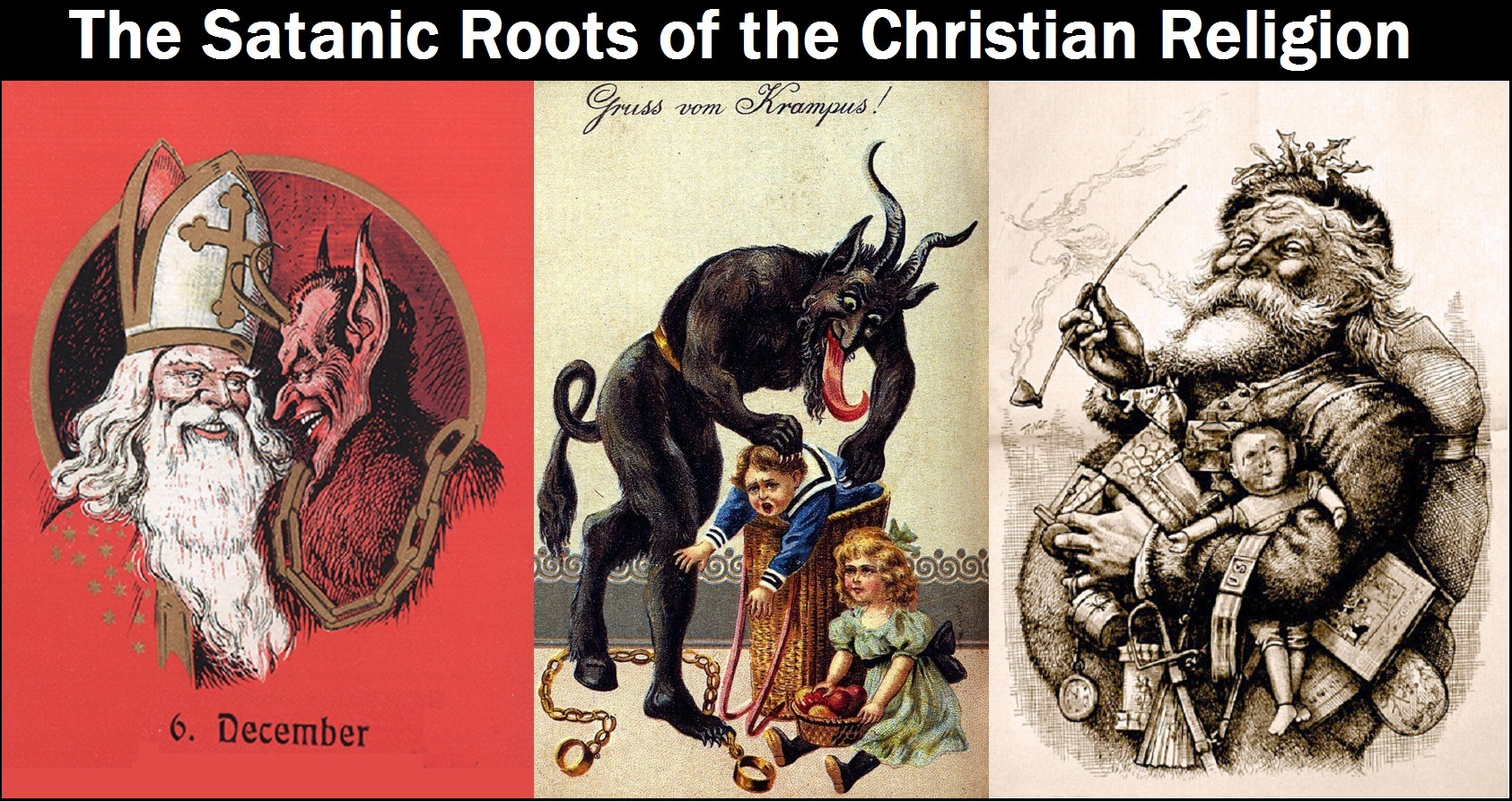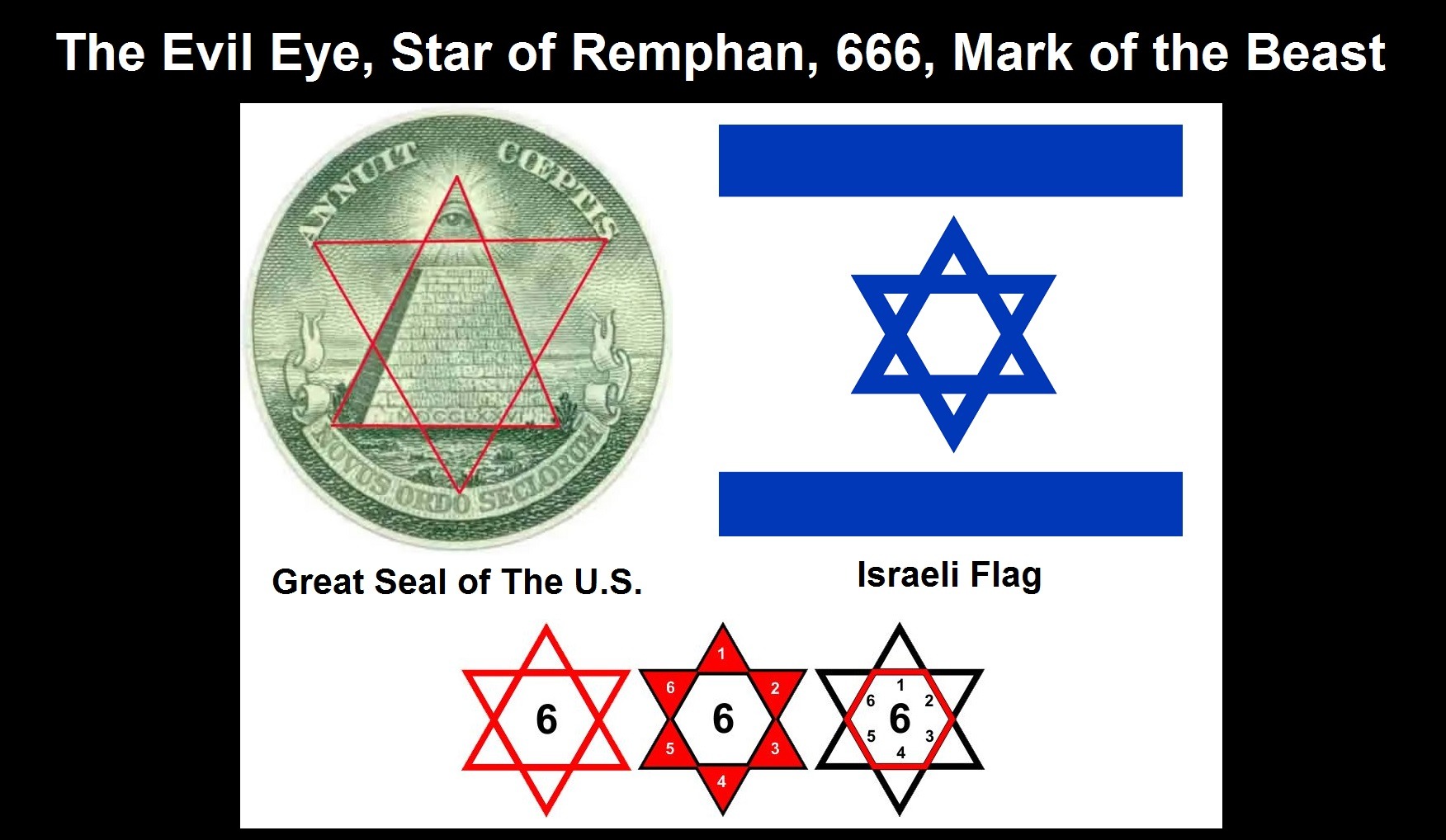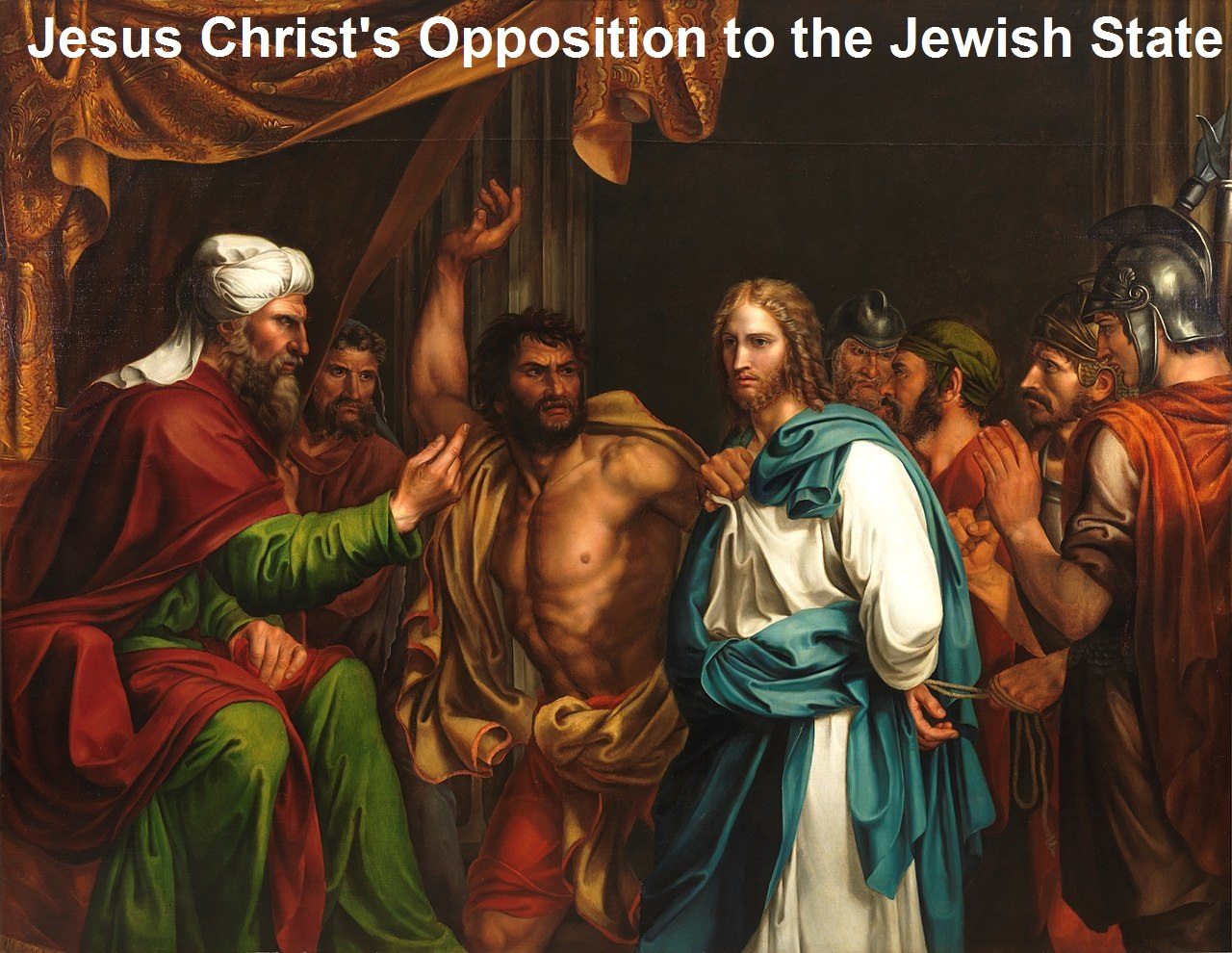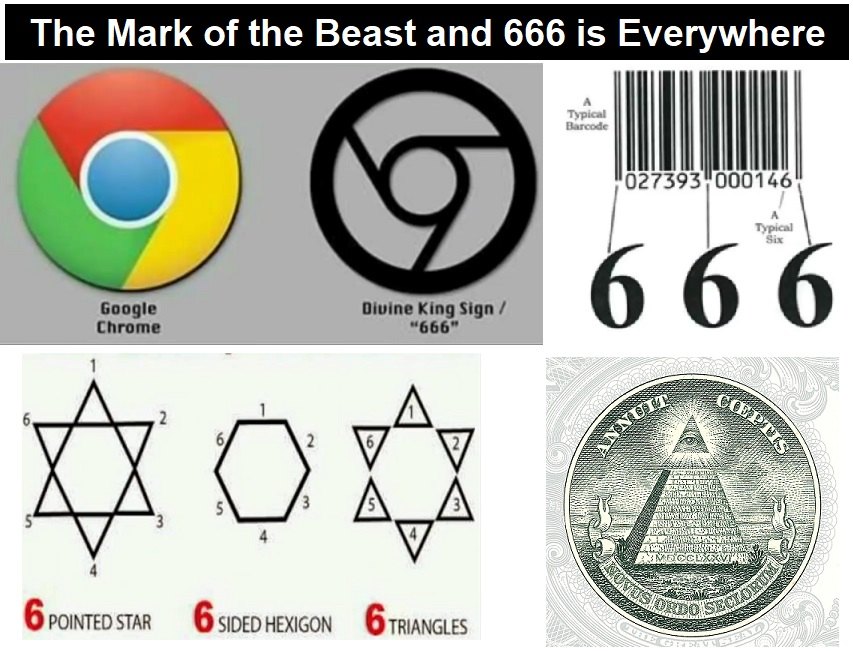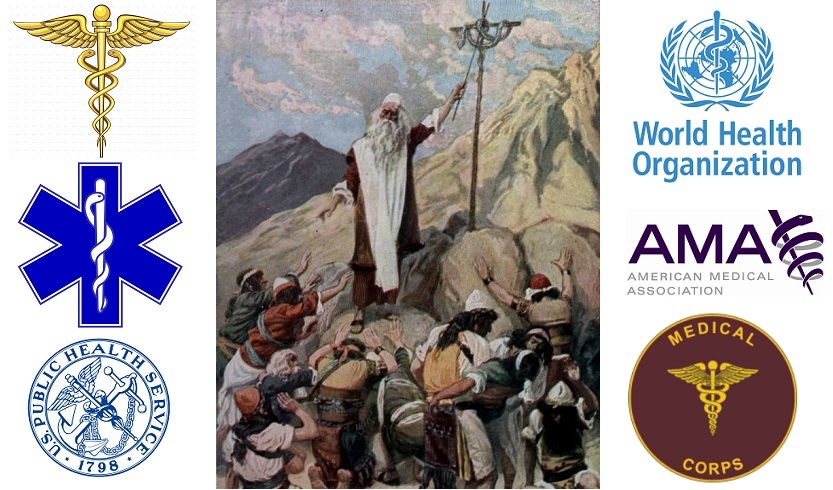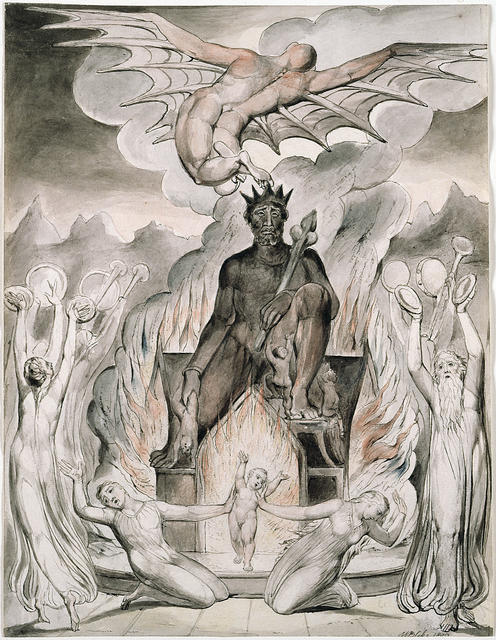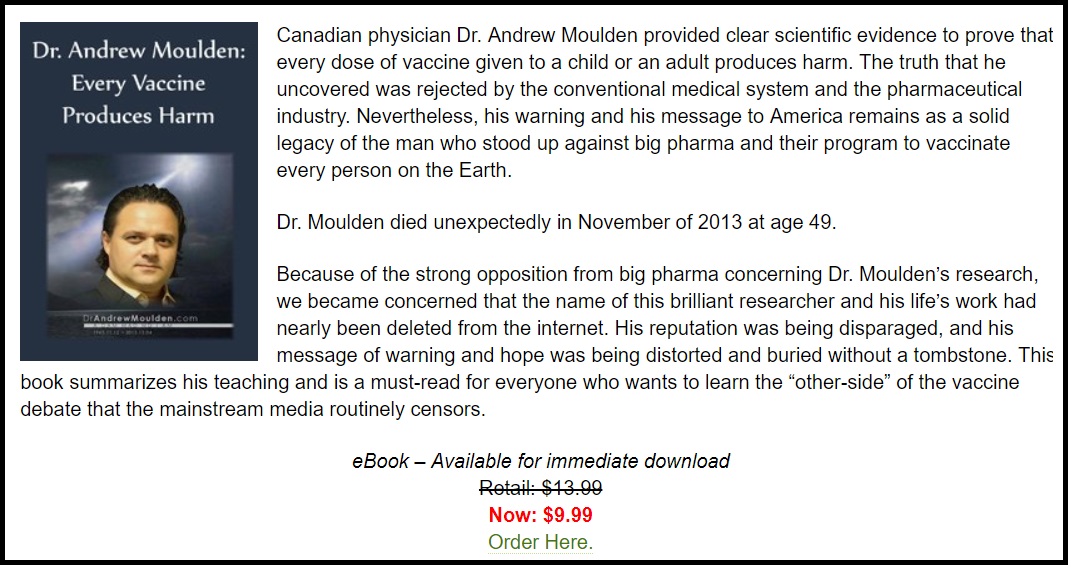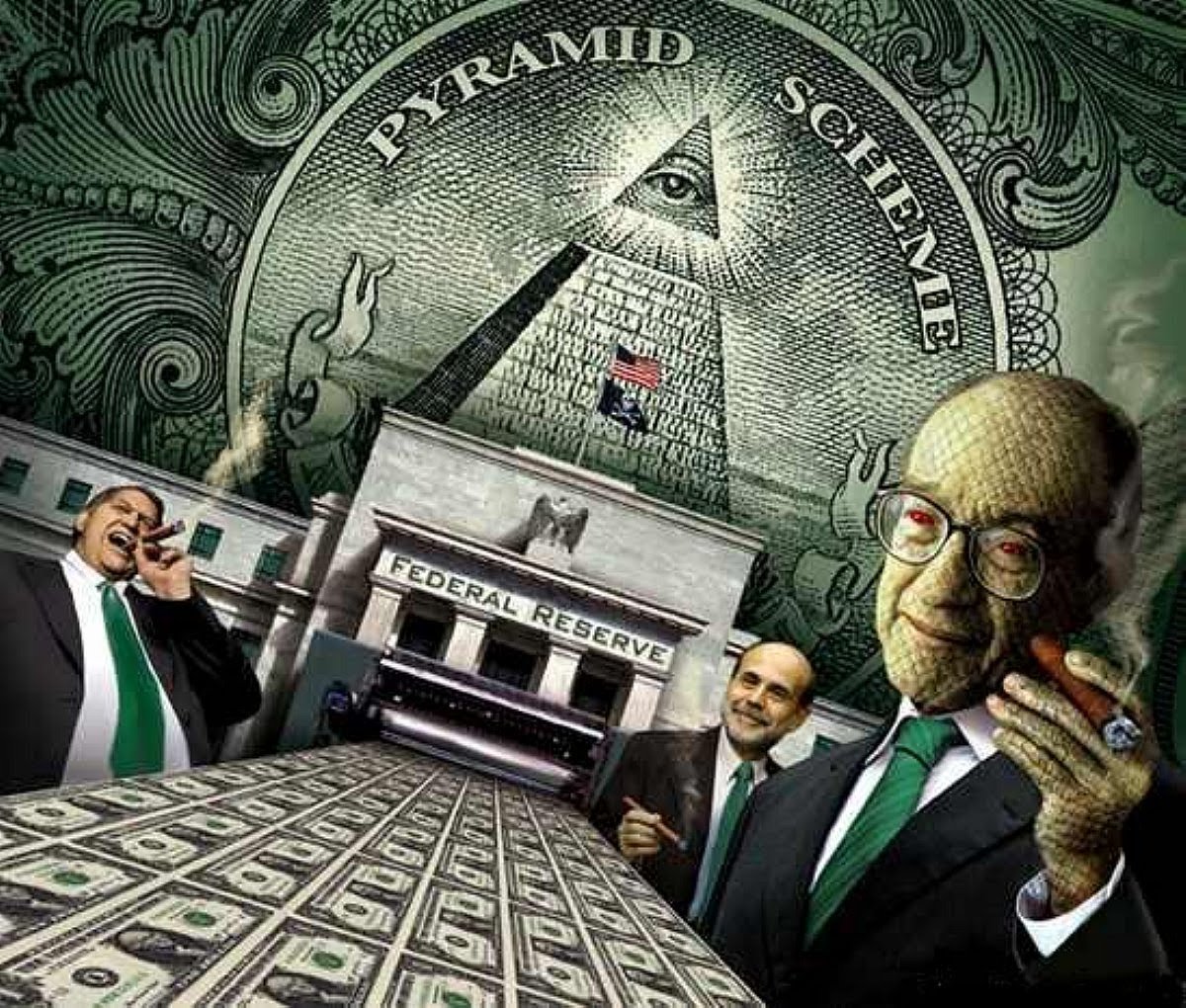
Comments by Brian Shilhavy
Editor, Health Impact News
Sam Parker of Behind The News Network has written an excellent commentary on the coming financial collapse and the inevitable fall of the U.S. dollar’s status as the global reserve currency.
Starting with World War II, Parker documents a historical perspective on the rise of the U.S. dollar to help the reader understand how we got to where we are today, including the role of the COVID Plandemic.
This is Part 1 of a 3-part series, and we look forward to the next two parts once they are published.
(Note: Even though the date on the article is in August, it was just published yesterday, October 13, 2022.)
The Perfect Storm Threatening the Dollar Hedgemony Part 1 (of a 3 Part Series)
by Sam Parker
Behind The News Network
Introduction
Financial Collapse Is a Mathematical Certainty
After the 2008 stock market crash, governments, because the economy collapsed globally, started spending like drunken sailors. The last 14 years have been a ballooning of the sovereign debt bond bubble.
Who’s going to save that bubble? Who’s going to be the buyer of all that debt when this bubble finally blows up?
Answer: No one.
Many who are aware of the situation are just surprised the system has lasted this long. It looked like it was ready to burst in September 2019, and then, conveniently, COVID showed up, which granted emergency powers to all central banks. Governments went on another spending spree, printing money, and this allowed them to kick the proverbial can down the road for another two years.
Here we are in 2022 and it’s unraveling again. And the reason why COVID was important is because the Federal Reserve was able to plug the hole in what was beginning to become a liquidity debt crisis.
They printed 65% more money. The money stock went up 65% year over year in 2020/1, and that was able to paper it over. Then, the economy was shut down, so when they reopened with all the money in the system, the US had a recovery for a year and a half. Stock markets went crazy, credit markets went crazy, back up again. But here we are two years later and we have inflation in assets, stocks and bonds.
So, when you see the dollar going up, that’s indicative of a debt crisis because money’s becoming tight. There are fewer dollars out there. People are scrambling for dollars.
COVID provided cover for the central banks and the governments, but it also allowed for a control system. If everything’s going to collapse, wouldn’t it be nice to have a control system where travel is restricted, you can blame it on a virus; you create vaccine passports, which then get linked to digital IDs, and then central bank digital currency.
So, COVID was a convenient excuse. The Rockefeller and Rothschild Empires were prepared to sacrifice the globe in order to save their empires. And six months after the start of the Ukraine war, we find that the Rockefeller Empire is now doing their best to destroy the EU, along with the Rothschild Empire-whose base is Europe. It’s funny how things work.
U.S. national interests are diverging sharply from those of its NATO satellites. America’s military-industrial complex, oil and agriculture sectors are benefiting, while European industrial interests are suffering. The interruption of world energy, food and minerals supply chains and the resulting price inflation has imposed enormous economic strains on U.S. allies in Europe and the Global South.
Yet the U.S. economy is benefiting from this. As Sergey Lavrov, pointed out:
“The European economy is impacted more than anything else. The stats show that 40 percent of the damage caused by sanctions is borne by the EU whereas the damage to the United States is less than 1 percent.”
The dollar’s exchange rate has soared against the euro, which has plunged to parity with the dollar and looks set to fall further down toward the $0.80 that it was a generation ago. U.S. dominance over Europe is further strengthened by the trade sanctions against Russian oil and gas. The U.S. is an LNG exporter, U.S. companies control the world oil trade, and U.S. firms are the world’s major grain marketers and exporters now that Russia is excluded from many foreign markets.
Next to oil, agriculture is a major contributor to the U.S. balance of payments. Blocking Russian grain and fertilizer shipping threatens to create a Global South food crisis as well as a European crisis as gas is unavailable to make domestic fertilizer.
Russia is the world’s largest exporter of grain and also of fertilizer, and its exports of these products have been exempted from NATO sanctions. But Russian shipping was blocked by Ukraine placing mines in the sea lanes through the Black Sea to close off access to Odessa’s harbor, hoping that the world would blame the world’s imminent grain and energy crisis on Russia instead of the US/NATO trade sanctions imposed on Russia.
At his July 20, 2022 press conference Sergey Lavrov showed the hypocrisy of the public relations attempt to distort matters:
“For many months, they told us that Russia was to blame for the food crisis because the sanctions don’t cover food and fertiliser. Therefore, Russia doesn’t need to find ways to avoid the sanctions and so it should trade because nobody stands in its way. It took us a lot of time to explain to them that, although food and fertiliser are not subject to sanctions, the first and second packages of Western restrictions affected freight costs, insurance premiums, permissions for Russian ships carrying these goods to dock at foreign ports and those for foreign ships taking on the same consignments at Russian harbours. They are openly lying to us that this is not true, and that it is up to Russia alone. This is foul play”.
Black Sea grain transport has begun to resume, but NATO countries have blocked payments to Russia in dollars, euros or currencies of other countries in the U.S. orbit. Food-deficit countries that cannot afford to pay distress-level food prices face drastic shortages, which will be exacerbated when they are compelled to pay their foreign debts denominated in the appreciating U.S. dollar.
The looming fuel and food crisis promises to drive a new wave of immigrants to Europe seeking survival. Europe already has been flooded with refugees from NATO’s bombing and backing of jihadist attacks on Libya and Arab oil-producing countries. This year’s proxy war in Ukraine and imposition of anti-Russian sanctions is a perfect illustration of Henry Kissinger’s quip: “It may be dangerous to be America’s enemy, but to be America’s friend is fatal.”
The first aim is to prevent Russia and China from helping each other.
This is the old imperial divide-and-conquer strategy. Minimizing Russia’s ability to support China would pave the way for the United States and NATO Europe to impose new trade sanctions on China, and to send jihadists to its western Xinjiang Uighur region.
The aim is to bleed Russia’s armaments inventory, kill enough of its soldiers, and create enough Russian shortages and suffering to not only weaken its ability to help China, but to spur its population to support a regime change, an American-sponsored “color revolution.” The dream is to promote a Yeltsin-like leader friendly to the neoliberal “therapy” that dismantled Russia’s economy in the 1990s.
Amazing as it may seem, U.S. strategists did not anticipate the obvious response by countries finding themselves together in the cross-hairs of US/NATO military and economic threats.
On July 19, 2022, the presidents of Russia and Iran met to announce their cooperation in the face of the sanctions war against them. That followed Russia’s earlier meeting with India’s Prime Minister Modi.. U.S. diplomacy is driving Russia, China, India and Iran together, and indeed to reach out to Argentina and other countries to join the BRICS-plus bank to protect themselves.
It is hard to see how driving countries out of the U.S. economic orbit serves long-term U.S. national interests. Dividing the world into two monetary blocs will limit Dollar Diplomacy to its NATO allies and satellites. America’s ultimate problem is its post-industrial economy. The failure and blowbacks of U.S. diplomacy are the result of problems that go beyond diplomacy itself. The underlying problem is the West’s commitment to financialization and privatization.
Most Asian labor can afford to work for lower wages because it has much lower housing costs and does not have to pay education debt. Health care is a public right, not a financialized market transaction, and pensions are not paid for in advance by wage-earners and employers but are public.
The aim in China in particular is to prevent the rentier Finance, Insurance and Real Estate (FIRE) sector from becoming a burdensome overhead whose economic interests differ from those of a socialist government. China treats money and banking as a public utility, to be created, spent and lent for purposes that help increase productivity and living standards (and increasingly to preserve the environment).
The global economic fracturing goes far beyond NATO’s conflict with Russia in Ukraine.
By the time the Biden administration took office at the start of 2021, Russia and China already had been discussing the need to de-dollarize their foreign trade and investment, using their own currencies. That involves the quantum leap of organizing a new payments-clearing institution.
Planning had not progressed beyond broad outlines of how such a system would work, but the U.S. confiscation of Russia’s foreign reserves made such planning urgent, starting with a BRICS-plus bank. A Eurasian alternative to the IMF will remove its ability to impose austerity “conditionalities” to force countries to lower payments to labor and give priority to paying their foreign creditors above feeding themselves and developing their own economies. Other institutions are being designed as China, Russia, Iran, India and their prospective allies represent a large enough critical mass to “go it alone,” based on their own mineral wealth and manufacturing power.
The basic U.S. policy has been to threaten to destabilize countries and perhaps bomb them until they agree to adopt western policies and privatize their public domain.
But taking on Russia, China and Iran is a much higher order of magnitude. NATO has disarmed itself of the ability to wage conventional warfare by handing over its supply of weaponry – admittedly largely outdated – to be devoured in Ukraine.
That leaves Western democracies with the ability to fight only one kind of war: atomic war – or at least, bombing at a distance, as was done in Afghanistan and the Near East, without requiring Western manpower.
This is not diplomacy at all. It is merely acting the role of wrecker. But that is the only tactic that remains available to the United States and NATO Europe.
How then can the United States maintain its world dominance? It has deindustrialized and run up foreign official debt far beyond any foreseeable way to be paid. Meanwhile, its banks and bondholders are demanding that the Global South and other countries pay foreign dollar bondholders in the face of their own trade crisis resulting from the soaring energy and food prices caused by America’s anti-Russian and anti-China belligerence. This double standard is a basic internal contradiction that goes to the core of today’s Western worldview.
To understand the current, dysfunctional global financial equation, it would do us all well by going back to the end of World War 2, and use this dare as a starting point for our narrative. To understand the present, it is necessary to understand the past. With these two in its place, the outlook for the immediate future can be assessed.
From The Gold-Dollar to the Petro – Dollar
At the end of World War 2, in 1945, the United States became the dominant financial, economic and military power on earth. Its’ homeland was intact. Its industrial base was not destroyed.
The war brought it immense wealth- not least of which it amassed the largest reserves of gold. All of its geo-economic and geopolitical rivals were cut down to size, or eliminated. It was this position of strength that enabled it to re-format the post-war global order, which was done under the Bretton Woods agreement.
As a result, several new multi-lateral institutions were established. The UN, the IMF and the World Bank. Later would be added the GATT (General Agreement on Trade and Tariffs).
Before we go on, it would be wise to establish some basic realities of power. The United States was controlled by the financial and business elite, most of them based in New York. The leader of this elite were the 5 Rockefeller brothers. They led, and everyone else followed. This American power elite I shall call as “NEW YORK” from now on.
The Rockefeller group of international oil companies and its associated banks emerged from the Second World War in a position of enormously increased power. At the apex of this power stood the 5 Rockefeller brothers.
Because the New York Federal Reserve Bank had accumulated the bulk of the world’s official gold reserves during the war (due to many countries war spending, which had to paid in gold), and because the dollar emerged from the ravages of war as the world’s strongest currency, backed by the world’s strongest economy, few could argue with what amounted to a postwar US dollar standard.
Gold was priced at $35 an ounce, and was linked to the dollar; in other words a “gold-dollar”. And all other currencies were linked, not to gold, but to the US dollar.
The US, under Rockefeller control, called the shots for a new economic order in the world.
Several new entities came into being. These were the IMF, the World Bank, and the UN, all dominated by the Rockefeller family, and all based either in Washington or New York.
In the financial sphere, all the world’s currencies would be linked to the dollar, while the dollar was linked to gold. American oil and banking interests emerged from the war in an enormously powerful position.
The bulk of the world’s gold once again ended up in New York and the Federal Reserve Bank of New York. It was some 90% of the world’s gold, worth some $33 billion. At a price of $35 per ounce, this worked out to nearly 34,000 tons of gold!
Due to the ravages of war, the world’s economic and trading systems were shattered. America was the exception. Its land mass was not destroyed. Its infrastructure was intact and modernized. Both the American oil and banking giants were tied to the Rockefeller family.
A scarcely-noted consequence of the global market grab by the US oil companies was the parallel rise of the New York banking groups tied to the oil companies. As US oil companies became an ever larger component of the international oil supply during and after World War 2, the New York banks benefited from the capital inflows of the world oil trade.
The period from 1945 till now has been called THE AMERICAN CENTURY, and this is now coming to an end.
From 1945 till the present day, the US has been the dominant power. Its power rests on three pillars: – OIL, MILITARY FORCE, and the DOLLAR.
And New York would use all three pillars in tandem to achieve its geopolitical aims. It has used its military fist to gain control over oil flows in order to ensure global dollar domination. Whenever Wall Street finds the dollar under threat, it unsheathes these two weapons to eliminate the threat.
Furthermore, it will use its military and financial muscle to eliminate any and all competitors in its grab to control oil resources, and oil transportation corridors.
By the end of the 1950s, the world began to look promising for the first time in more than three decades. World trade in manufactured goods exceeded that of primary goods – food and raw materials. Europe began to stabilize and grow.
Within the US, Wall Street had not upgraded its factories, while Europe and Japan had built brand new plants, with a higher level of efficiency. With higher interest rates and profits (15% against 5%) to be earned abroad, Wall Street began to turn its back on US industry.
In late 1957, the US underwent the first phase of a deep recession, a recession which was saved by the “Vietnam Option”.
New York viewed the entire world as their domain in the 1950s, not the narrow confines of the US. By the late 1950s, more funds began to flow out of the US than was coming in. US banks kept their dollars in Europe rather than repatriate the profits to invest in American development. When the Bretton Woods Agreement was signed in 1944, the gold-dollar ratio was at $35 per ounce. This ratio was not altered in 25 years, despite a world war and the dramatic postwar developments in the world economy.
As long as the US remained the only strong economy in the world, these flaws could be ignored. But, by the beginning of the 1960s, as Europe began to grow at faster rates than the US, it was becoming clear something had to change in the fixed gold-dollar ratio.
Yet, Washington refused to play by the very rules it had imposed on its allies in 1944. Within the US, inflation was creeping up, and the average man in the street did not notice. Due to over-valued dollar (gold was still at $35 instead of $50-$70), the inflation within the American economy was shifted to the rest of the world.
If a given national economy produces the same value of goods under the same technological basis over a period of 10 years, and prints double the amount of money for the same volume of goods as at the beginning of the decade, the “consumer” notices the effect as a significant price inflation. He pays $2 for a loaf of bread, which costs him only $1 in 1950. But when this effect is spread around the entire world economy by virtue of the dominant position of the dollar, the inflated reality could be masked for a bit longer. The results, however, were every bit as destructive.
Nixon Pulls the Plug
The Vietnam War pushed its external spending up greatly. By 1967, the US external liability had increased to $36 billion, while her gold reserves shrank to $12 billion. By 1967 the US entered into another recession. Speculative money began to dump the dollar in record amounts. This resulted in increasingly unstable short-term currency speculation.
In May 1971, the US recorded its first monthly trade deficit. That triggered an international panic sell off US dollars. The situation was becoming desperate. US gold reserves represented less than 25% of her liabilities.
June 1971 was a breaking point for the British.
The British economy was in trouble, again. And London wanted to cash in its surplus dollars for gold.
So, on Friday, August 12, 1971, a senior Bank of England delegation visited Nixon in the White House, with a document, demanding that the US pay them the sum of $3 billion, which it owed to Britain. Britain wanted payment in gold.
The White House listened, incredulously, and told them to return on Monday.
David Rockefeller’s team, headed by Paul Volcker prepared a response. On that fateful Monday, August 15, 1971, Nixon announced a move that rocked the world: formal suspension of the dollar convertibility into gold, effectively putting the world into a direct dollar standard, with no gold backing.
The British were furious! As long as gold was part of the international system, then London was still in the game. Without this, Britain was in danger of becoming a 3rd-rate power.
A senior Wall Street operative told a friend how, in the future, this would work for Wall Street, and said :
“We pulled off the biggest rip-off in history! We’ve run rings around the British Empire!”
Foreign holders of gold could no longer redeem their paper for US gold. New York set a series of events into motion which would rock the world as never before. The suspension of gold redemption, and the resulting “floating exchange rates” of the early 1970s, solved nothing. It only bought time.
Wall Street won, and its rationale was that the power of its financial domain must be untouched, even at the expense of economic production and prosperity.
New York followed the same policy as London did a century earlier, but after August 1971, US foreign policy fell under another Rockefeller agent, Henry Kissinger. His mandate was to control, not develop, economies throughout the world. World trade was simply another arena of speculation on which direction various currencies would speculate.
Massive capital flows again left the dollar for Europe and Japan. In 1972, the dollar fell 40% against major currencies. The design behind the August 1971 dollar strategy did not emerge until October 1973, and even then, few people, outside a handful of insiders grasped the connection.
Now, one may ask what all of this has got to do with finance, and its modern-day operations.
It is very simple. Here, we are showing methodologies, or the “modus operandi”, of how these power brokers think, plan and act. Consider it as a template. Once we understand the “tic-tac-toe” of geopolitics, it makes explaining the future articles easier, and shorter.
Oil & the October 1973 War
The backdrop to the oil shortage and rising prices was an unstable Middle East. The Arabs were feeling frustrated with the West in regards to Israel. Anwar Sadat became the new president of Egypt after Nasser’s death in 1970. By the end of 1972, Sadat decided he would have to go to war.
By April 1973, these plans were finalized. The only people who knew the specifics of these war plans outside the few within the high commands of Syria and Egypt was King Faisal of Saudi Arabia; and, of course, Kissinger and his boss, David Rockefeller.
And this meant that oil would be central to the coming conflict. Control of the flow of resources has been of strategic concern throughout history. Asserting pricing and currency control over the oil was the main game plan.
In 1973, all the pieces on the chessboard were being aligned to fit into the Rockefeller game plan. New York decided to launch a colossal assault against industrial growth in the world, in order to tilt the balance of power to the advantage of Wall Street financial interests.
In order to do this, they determined to use their most-prized weapon – control of the world’s oil flows. Never in history had such a small circle of interests controlled so much of the world’s destiny. Their scheme was utterly outrageous, and that was to their advantage.
May 1973 – Bilderberg Meeting
The Bilderberg Group is a private policy-making group, founded in 1954 by David Rockefeller. This is a common policy body for the Rockefeller and Rothschilds’ “Networks of Power “.
The annual Bilderberg meetings gathered top elites from the US and Europe for secret meetings and policy discussions. Consensus was then shaped in subsequent press comments and media coverage, but never with reference to the secret Bilderberg talks themselves.
In May 1973, with the dramatic fall of the dollar still fresh, a group of 84 of the world’s top political and financial insiders met at a secluded island in Sweden belonging to the Wallenberg family. This family was in the Rothschild orbit, and controlled Sweden in the same way that the Oppenheimer family controlled South Africa.
The gathering was told of an imminent conflict in the Middle East, which would result in the price of oil going up by 400%. The purpose of the meeting was not to stop the war, but, rather to plan and manage this coming flood of dollars, a process Kissinger called “recycling the petro-dollar flows”.
The Arab oil-exporting countries would see their oil income jump by 400%, and their economies could not absorb this cash, thus, this surplus cash would be deposited in select banks belonging to the 2 families.
On September 28, David Rockefeller paid a visit to Sadat in Egypt. He had visited Sadat several times in the preceding 3 years. The message from David to Sadat was that it was now “time to heat the temperature up in the region”. There could be no clearer signal for GO.
A week later, on 6 October, 1973, Egypt and Syria launched the October War against Israel. The entire constellation of events surrounding the outbreak of the October War, and its aftermath was secretly orchestrated from New York, using the powerful and secret intelligence channels established by Kissinger.
The Rockefellers scripted the war and its aftermath along the precise lines of the Bilderberg meetings 5 months earlier. The Rothschilds knew all along, and they instructed Golda Meir, the Israeli prime minister, that at no stage must she pre-empt by attacking first.
In response to the American resupply of arms to a hysterical n beleaguered Israel, on 16th October, OPEC met in Vienna and raised the price of oil by 70% to $5.11 a barrel. That same day, the Arab oil producers instituted an oil embargo against the Western supporters of Israel. A day later, they instituted a production cutback.
Following a meeting in January 1974, yet a second price increase of more than 100% was added, bringing the price of oil to $11.65 per barrel. The Rockefeller plan achieved its target of a 400% increase in the price of oil, some 8 months after Bilderberg meeting in Sweden.
This was done on the surprising demand by the Shah of Iran, who had been secretly told to do so by Kissinger. Pressure was put on Saudi Arabia to agree to this.
Resistance came in the form of the finance and foreign ministers of Saudi Arabia. On one December afternoon, both of these officials were killed by the CIA, one in Washington, and the other in New York (see the full story of this in the article “The Saudi-US Nexus”).
By March 1975, this new oil-price mechanism was a done deal. Oil would be sold only for dollars.
Because the world had to buy oil, and pay for it in dollars, the world’s demands for dollars could only increase. Even though dollars could no longer be exchanged for gold, they were now exchangeable for oil!
The dollar was now backed by oil. It became known as the petro-dollar.
If any oil-exporting nation demanded payment for its oil in any other currency besides the dollar, that nation had to be convinced, either by political pressure or military means, to change its mind.
The GOLD-DOLLAR had now been replaced by the PETRO-DOLLAR! The only limit was how many dollars the rest of the world would be willing to accept on the full faith and credit of the US Government.
The ensuing results were rapid inflation. The bulk of OPEC’s dollar revenues were deposited with the leading banks in London and New York, the very banks which dealt in dollars and the international oil trade.
This Petro-dollar arrangement proved very valuable for the dollar, and the Rockefeller-tied oil and banking giants. The world was forced to buy immense amounts of dollars continuously to purchase oil.
One consequence of this was the emergence of these few banks and oil companies (such as Exxon, Mobil, Chevron, Texaco), in New York, as giants of world industry. These banks and oil companies so overwhelmed the scale of ordinary companies that their power and influence seemed invincible.
Third World countries were forced to divert precious funds from industrial, agricultural and social development into simply paying for their massive oil import bills, which, of course, had to be paid in dollars. It was a double blow for these countries, as exports of their raw materials and commodities declined greatly due to the recession in the industrialized world.
The Aftermath
Despite the economic and financial shocks which ensued from this Oil Shock, by late 1975, certain parts of the world began to resume industrial development. For the Third World, the oil shock spelled an end to development and a reversal of hopes for a better life that had emerged during the 1960s.
In this period, four new policies were put in motion. The most dangerous was the fourth policy.
In 1972, David’s eldest brother, John D Rockefeller the 3rd, wrote and published a book called “The Second American Revolution”. It acted as a blueprint for the next two decades for policy-planners in America.
In 1975, the elite policy-making think tank of the Rockefeller family, the New York-based Council on Foreign Relations (CFR), drafted a series of policies blueprinted- taken from this book – for the 1980s. Its theme was a policy of “controlled-disintegration” of the world economy.
What was disintegrating was the entire fabric of industrial and agricultural development, from the 1st World to the 3rd World.
The aim here was that many countries would become financially weak, thus in no position to negotiate better deals with creditor banks in New York and London. They would be forced to adopt policies that resulted in “privatization and deregulation,” and allowing easier access to western capital into their countries. In this manner, the best and choicest resources and companies would be taken over, “on the cheap”, and by US and British banks and companies.
Now, as we have seen many Third World countries suffered huge trading deficits – due to higher oil import bills and lower exports receipts, they were forced to go cap-in hand to the banks in New York and London, for dollar loans, to bridge this gap. These banks stepped into the breach to lend the “petro-dollars” to these countries, but only to “balance” the accounts, and not to finance development.
Since at least the beginning of the 1970’s Washington has deployed similar tactics of economic blackmail and destabilization to force what has become a global domination not of US manufactured goods, but rather of the dollar as world reserve currency. For almost five decades, since August 15, 1971, Washington and Wall Street have used their dominant position to force inflated paper dollars on the world, cause financial bubbles and subsequently debt buildup to impossible levels, then collapse.
The US economy since 1971 has been turned into a financial revenue source, in effect turning the United States from a nation primarily producing industrial goods to one in which the sole aim of all investment is to make money from money. In short, the economy was financialised.
The process took place over decades. By 2000, Wall Street banks and investment funds essentially dominated the entirety of the US economy.
Manufacturing jobs had been pushed offshore, “outsourced,” by pressure from those same Wall Street banks that since the 1980’s had driven corporations to focus only on the value of their stock shares and not on the soundness of their products. Leveraged Buyouts, Shareholder Value became bywords. Corporate heads perished if Wall Street banks did not approve their financial profit returns.
What that has left today is a United States that is primarily a services economy, a debt-bloated consumer economy and no longer a great industrial leader.
The so-called upper 1% of US oligarchs are demanding similar tribute from the rest of the world to sustain the unsustainable.
Even using the US government inflation measure what a US citizen could buy in 1970 for $385 in terms of food, clothing and other necessities, a person would need $2,529 today.
That is a direct consequence of the Nixon gold decoupling. In a stroke of the pen, Nixon and Wall Street had removed the threat of a gold cap on foreign dollar debts. The debts soared and Washington and Wall Street today have a dollarized world trade system where US Treasury sanctions are becoming commonplace as weapons of war to force friend and foe alike to join lock step behind Washington demands.
The style has changed in US economic blackmail since the 1970’s, but not the content.
New York and the Rockefeller family had the world in its grip. All of these will serve as a backdrop to the ongoing collapse of the dollar system, and how international finance began to dominate all other sectors of the global economy. It was based on a flawed system, which would have devastating consequences in the coming decades.
Economics of Empires
A nation-state taxes its own citizens, while an empire taxes other nation- states. The history of empires teaches that the economic foundation of every single empire is the taxation of other nations.
The imperial (a very polite world for looting and raping) ability to tax has always rested on a better and stronger economy, with a better and stronger military. One part of the subject taxes went to improve the living standards of the empire; the other part went to strengthen the military dominance necessary to enforce the collection of those taxes.
Historically, taxing the subject state has been in various forms; whatever economic goods the empire demanded and the subject state could deliver. Imperial taxation has always been direct; the subject state handed over the economic goods directly to the empire.
When the dollar transitioned from a gold-backing to a Petro-dollar, things began to change for the worse in the global economic field.
For the first time in history, in the 20th century, America was able to tax the world indirectly, through inflation. It did not enforce the direct payment of taxes like all its predecessor empires did, but distributed instead its own currency, the US dollar, to other nations in exchange for goods with the intended consequence of inflating and devaluing those dollars and paying back later each dollar with less economic goods – the difference capturing the American imperial tax.
We have read how this happened.
Essentially, the US declared itself to be an Empire. It had extracted an enormous amount of economic goods from the rest of the world, with no intention or ability to return those goods, and the world was powerless to respond.
The world was taxed and it could not do anything about it. From that point on, to sustain the American Empire and to continue to tax the rest of the world, the US had to force the world to continue to accept ever-depreciating dollars in exchange for economic goods. It had to give the world an economic reason to hold even more dollars, and that reason was oil.
“Controlled Disintegration”
During 1975 the CFR (Council on Foreign Relations-the premier Rockefeller think tank, which shapes policy for the family) drafted a series of policy blueprints for the 1980s, much as they had done at the crucial turning point in the 1957 recession.
And this new policy, in turn, used John D Rockefeller’s 1972 book, “The Second American Revolution”, as its inspiration.
The CFR stated, in its account, that “- – a degree of controlled disintegration in the world economy is a legitimate objective for the 1980s”.
What was disintegrating, however, was the entire fabric of traditional industrial and agricultural development in the Third World. The first World was not left out either.
The decade of the 1980s would widen the gap between the very wealthy (the 1%) and the masses. And the elite would serve the 1%.
This fact was not being made available to the masses, because “they would not understand”. The elite must shape the illusion in what was termed the “manufacture of consent”.
The American version of this model would be shaped by an aristocracy of money, rather than the British version which relied on blood aristocracy of birth.
But increasingly, as a consequence of the economic policy decisions of the Rockefeller Empire, the United States became transformed.
America, once the ideal for freedom for much of the world, was transformed, step-by-step, into the opposite, and at a quickening pace during the 70s and 80s, while she retained a rhetorical facade of “freedom and liberty”.
Long-term government-funded infrastructure- such as railroads, highways, water, and sewage and power construction was devastated by this policy in the early 1980s. The world steel industry was forced into its worst depression since the 1930s. The aim was to shift economic policy throughout most of the industrialized world away from the direction of long-term industrial and nuclear development.
The relative power of the two families was thus set to become dominant again, in which Wall Street would call the shots, rather than industrial development. Financial speculation was more important and profitable than building a factory. What followed in the decade of the 1980s and 90s would have appeared inconceivable to a world which had not already been stunned and disorientated by the shocks of the 1970s.
In 1980, Rockefeller man Paul Volcker was put as the head of the Fed. Immediately, the Fed raised interest rates to 20%- 3 times what is was a year earlier. This had the effect on America’s economy. No infrastructure development, industrial enterprises closed down, and more.
This was a deliberate collapse of America’s industrial base. In addition, this also cut off further investment in long-term infrastructure and industry. In the future, American production would be moved to cheap-labor countries, such as Mexico, Taiwan, and later to China.
Internationally, this interest rate increase devastated the economies of the Global South. This achieved lower prices paid for raw material exports to the Collective West, besides the increase in debt payments to the Anglo-American banks.
Overall, the 1980s paved the way for American multinationals to expand globally, breaking down barriers across the world. This, in turn, made it easier for the Rockefeller Empire to “globalize” the world economy.
Globalization
Globalization has been emerging since the 1960s but did not gain its name and widespread recognition until the 1990s, shortly after the fall of the Berlin Wall.
Multinational corporations had existed for decades, but the new global corporation was different. A multinational corporation has its roots and head office in one country, but has operations in many other countries.
The new global corporation was just that – global. It submerged its national identity as much as possible and forged a new identity as a global brand stripped of national distinction. Decisions about the locations of factories and distribution centers were based on considerations of cost, logistics and profits without regard to affection for a nominal home country.
Globalization emerged not through the initiation of any new policies, but through the elimination of many old ones. From 1945 to 1990, the world was divided not only by the Iron Curtain separating the communist and capitalist spheres, but also by the restrictions imposed by capitalist countries themselves. These restrictions included capital controls that made it difficult to invest freely across borders.
The world was highly fragmented, discriminatory and costly for firms with international ambitions. By the late 1990s, these costs and barriers had mostly been removed. Taxes were reduced or eliminated; capital was able to move freely across borders; labor mobility improved; stock exchanges deregulated and merged across borders to create global giants.
The expansion of the EU created the world’s richest tariff-free market, and the launch of the Euro eliminated countless currency conversions and their costs.
Russia and China rose as new capitalistic societies eager to adopt many of the global norms they saw emerging in Western countries. Economic and political walls were coming down while, at the same time, technology brought about an ease in communications.
Infinite risk in a borderless world was the new condition of finance.
Globalization increased the scale and interconnectedness of finance beyond whatever had existed. While issuance of bonds was traditionally limited by the use to which the borrower put the proceeds, derivatives had no such natural limit. They could be created in infinite amounts by mere reference to the underlying security on which they were based.
The ability to sell Nevada subprime mortgage loans to German regional banks after the loans had been bundled, sliced, repackaged, and wrapped with worthless triple-A ratings was a wonder of the age.
In a globalized world what was old was new again.
A first age of globalization had occurred from 1880 to 1914, where the wonders were steamships, telephones, radio, and the combustion engine.
The second period was from 1999 to 2006, where it was the internet, cell-phones, etc.
In 1990, China opened up to trade and investments. At the same time, Russia had finally begun to throw off its late feudal model and modernize its industry and agriculture, and a unified Germany was becoming an industrial and economic giant.
One of the benefits to the Rockefeller Empire was that by shifting production to China, it helped to slow the growth of oil consumption within the US.
The reverse happened in China. China was a net exporter of oil, but due to increased levels of production, China became a net importer of oil in November 1993.
From this point on, New York reckoned that it could dictate the future of China, through its control of oil flows. The effect of such developments on finance was much the same at the turn of the century. Bonds could be issued in Argentine, underwritten in London and purchased in New York. Oil could be refined in California and shipped to Japan on credit provided by banks in Shanghai.
Two world wars, two currency wars, the end of the Cold War, and the fall of empires, would pass before the new age of globalization began.
In 2016, international finance is omnipresent; whether it is here to stay remains to be seen. History shows that civilization and globalization it represents are no more than a thin veneer on the jagged edge of chaos.
The next part of this article deals with a subject called derivatives. Derivatives are, no doubt, the prime cause of the destruction of the Dollar Hegemony of the Rockefeller Empire.
Read the full article at Behind The News Network.
Comment on this article at HealthImpactNews.com.
This article was written by Human Superior Intelligence (HSI)
See Also:
Understand the Times We are Currently Living Through
The Demonic Roots of Christianity: The Christians Jesus Said He Hated
Who are God’s “Chosen People”?
Life in the Spirit versus the Religious Life in the Flesh
KABBALAH: The Anti-Christ Religion of Satan that Controls the World Today
Christian Teaching on Sex and Marriage vs. The Actual Biblical Teaching
Exposing the Christian Zionism Cult
The Bewitching of America with the Evil Eye and the Mark of the Beast
Jesus Christ’s Opposition to the Jewish State: Lessons for Today
Identifying the Luciferian Globalists Implementing the New World Order – Who are the “Jews”?
The Brain Myth: Your Intellect and Thoughts Originate in Your Heart, Not Your Brain
The Seal and Mark of God is Far More Important than the “Mark of the Beast” – Are You Prepared for What’s Coming?
The Satanic Roots to Modern Medicine – The Image of the Beast?
Medicine: Idolatry in the Twenty First Century – 10-Year-Old Article More Relevant Today than the Day it was Written
Having problems receiving our emails? See:
How to Beat Internet Censorship and Create Your Own Newsfeed
We Are Now on Telegram. Video channels at Bitchute, and Odysee.
If our website is seized and shut down, find us on Telegram, as well as Bitchute and Odysee for further instructions about where to find us.
If you use the TOR Onion browser, here are the links and corresponding URLs to use in the TOR browser to find us on the Dark Web: Health Impact News, Vaccine Impact, Medical Kidnap, Created4Health, CoconutOil.com.
Leaving a lucrative career as a nephrologist (kidney doctor), Dr. Suzanne Humphries is now free to actually help cure people.
In this autobiography she explains why good doctors are constrained within the current corrupt medical system from practicing real, ethical medicine.
One of the sane voices when it comes to examining the science behind modern-day vaccines, no pro-vaccine extremist doctors have ever dared to debate her in public.
-
Book – The Vaccine Court, by Wayne Rohde – 240 pages
“The Dark Truth of America’s Vaccine Injury Compensation Program”
FREE Shipping Available!
ORDER HERE!





